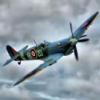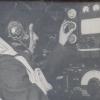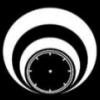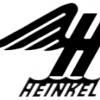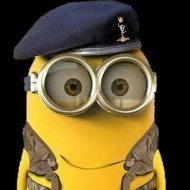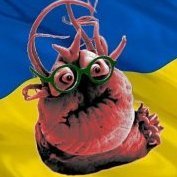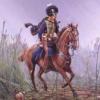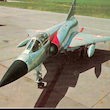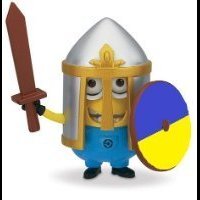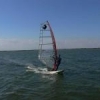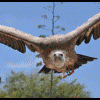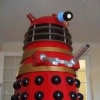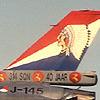Leaderboard
Popular Content
Showing content with the highest reputation on 21/05/17 in all areas
-
Douglas DC-4 - 1:144 Minicraft Aer Turas decals - classic-airlines.com This is the lovely Minicraft DC-4 kit, with decals from classic-airlines,com. The decals are laser printed on constant film, so need individually cutting out.They do some wonderful schems from the 60's and 70's, I just can't resist buying them! I'm deveoping a real liking for Irish aviation, as well as the smaller independant airlines of the 60's, so this one scores on both counts. Having seen Ian Turbofans beautiful British Eagle Brittannia, which he photographed using a hairdryer to spin the props, I thought I'd do a couple of photos like that myself! 'With something else' - its' close relative the ATL Carvair, in real life actually converted from a DC-4. Also has classic-airlines.com decals. Thanks for looking John25 points
-
My first build after long hiatus (explained more in my Heller 109K thread) the Hawker Hunter MkI. Completed this a couple months ago, just getting around to posting it. Actually used the Eastern Star reissue, but it's the original 1959 Frog tool. Built box stock with the exception of blanking off the intakes and I decided to give scribing recessed panel lines a go. Painted with Tamiya acrylics. Oh...I also used a piece of the sprue to carve the little bullet fairing at the back of the horizontal stabs. Yes...that's a pilot's head molded into the solidly blanked off cockpit...and the wheel well outlines are simply scribed into the bottom...it was 1959, after all. Still, builds a nice looking model of a beautiful jet IMHO.22 points
-
Dear fellow Britmodellers, here's my 1/72 Airfix Mustang P-51D (Kit #A01004A) built straight from the box. Decals represent the mount of Lt. Eugene W. James, 352nd FG, 328th FS, Bodney/Norfolk, England 1944. Painted with acrylics from Gunze/Mr.Hobby and Alclad II. This kit is cheap, easy to build and has very good surface detail. The plastic used by Airfix is quite soft, which resulted in some broken or bent parts. I broke the control column and the blade antenna when trying to remove it from the sprues. (I scratch-built a new control stick and replaced the kit's antenna with a photoetch item.) One of the undercarriage legs was badly bent. Due to the softness of the plastic, the model is in a "wobbly" state, when you touch it, it rocks from side to side! This is the only weak point of the whole model kit. If I build another one, I will invest in a metal undercarriage from Scale Aircraft Conversions. Ok, here's the pictures ... as usual, taken by Mr. Wolfgang Rabel of IGM Cars & Bikes. Best wishes from Vienna! Thanks for your interest! Roman14 points
-
I have finally finished. This kit gave a few problems being fit issues on nearly everything but I have really enjoyed doing it as it gave me a chance to try a few new things. I am really pleased with the result and after reading references on the Pucara I can see why people loved it. Anyway here are the photo's and I am sorry there are a few. Before I forget thanks to everyone for their advice and support through the build which can be found at http://www.britmodeller.com/forums/index.php?/topic/235018470-172-airfix-pucara/11 points
-
Hi mates! Allready finished Flying Flapjack (KH 1/48) WIP link - Edited July 09 - all picture links changed from photobucket to onedrive10 points
-
10 points
-
Hi, here are a few pics of one of my last builds, a Lagg-3 built essentially from the box from ICM. The only change was lengthening the fuselage by 3mm just after the main radiator exhaust. The paints are Gunze, red stars are airbrushed with masks. Weathering was done with Mig ammo washes, various pigments and ink pens. Hope you will like it, Christian.10 points
-
Hi, everyone! I present you my next model - French heavy fighter prototype of WWII. It's full resin kit with vacuumformed canopy.9 points
-
Hi all. The old Tamiya updated with some goodies, not bad for a 35 years old kit!8 points
-
I have posted a few photos in the RFI section concerning the conversion of an Airfix 08002 Lancaster to the Manchester aircraft I just wanted to show how the main elements of the conversion were achieved, mainly the Wings, tailplanes and the engines for anybody that would consider the conversion ?? The main wings . . . To get the nacelles to fit under the wings The tailplane at 28ft span .. . The engines: profile pieces Thanks for looking in Ian8 points
-
Afternoon gents. As I sit here a few hours before I head off to see the MIGHTY Iron Maiden beer in hand I'm contemplating nearing the end of this my first Acadamy build and my most third party stuff build evah. i really thought I'd get it today but due to a few slight hiccups I think it's one maybe two posts away from completion. Let's begin with this mornings secret lemonade drinker mission. first off the tyre treads looked so ace I thought I'd pick rack one out with German grey. took a while. nice initial base though. Then the canopies got unmasked. Spot the error? As I had spotted it before glossing thanks to @Vadim's pics I didn't gloss that hump bit. A few swipes with Mr Collour thinners and. Blammo! There is the side panel to. The nose got a pre shade and a blast of red. and done. The tyres got a pigment pass. then toned down and assembled. the anti glare panels got Matt coated. All the bits got painted. Even the prop tips. Now this is where all my builds seem to falter. I dread removing the canopy masking due to unknown CrAzY and this build is no exception. Taking off the tape the inside had some blotchiness so I cotton budded it. Big mistake, I pinged off the target sight, lost the glass part and also pinged off the steering wheel. but to be fair she looked pretty good on it. I managed to make a new glass sight and glue all the bits back on again. So no worries. Phew!. fitting the wheels bought up the (oh hell the peg doesn't fit the hole) problem. So 20 mins later and lots of very careful scraping the wheels are on. we are here and here she stays for another night. thank you all for following my little build. I'm off on my holibobs the week after next so this will be my last until I come back. I'll contemplate my build while away although I have an idea. take care Y'all and happy Modelling. Eddie says hi. up the irons etc. Johnny.8 points
-
Trumpeter 1/72 LAV-25 with a Preiser figure. Home made back ground.7 points
-
rhank you folks it was like Christmas this morning when I peeled all the tape off... ..apart from the wingtips, the skinning is complete... ..however, the reason it is kept in tape and will be wrapped again can can be clearly seen when it is sat on my tiny and very messy workbench... dinks are bound to happen.. so an important step is pretty much complete, and next on the block is the canopy - I have some great drawings in the Montforton book but the thing I need to know is if the XVI canopy in there is the same as a Mk XIV - can anyone tell me?7 points
-
Thanks everyone, I spent yesterday tinkering with the weathering, mainly adding a bit more shading and highlighting, and a few streaks here and there, and I've decided to call it done. I could keep adding more but, given the small scale, I think it would start to look over-worked. I'd rather keep it more on the subtle side, although admittedly I may already have gone beyond that point The hull's had some more enamel work, and some of the raised details have been highlighted in acrylic. Most of the hatches have had some oil paint shading around them, to give them a little more definition. There's also some very subtle streaking, which was done with watercolour pencils The legs and feet have had some shading and dirt added, using a few oily/grimy colours After adding the main hull to the chassis and legs, the last things to attach were the two flak shields on either side of the 222 armoured car So that's it; build finished. It's gone together much faster than I'd initially thought it would, but the kit's deceptively simple, especially considering how much detail Bandai have packed into it. For my money (all 50 quid of it, courtesy of the post office and their fees) it's the best (Star Wars) kit Bandai have produced to date. I can't think of much they could have done to improve it, apart from make it bigger of course. Thanks to everyone for following along. I'll get the finished shots up in RFI shortly. Andy7 points
-
Something post-WW2...The Revell Stearman Kaydet in 1/72nd scale, used in Israel in the late 40s and 50s as a training aircraft. The build is OOB, with only the rigging in .004 line (drilldrilldrill) and Vallejo colors. the decals are aftermarket from a wonderful set made by Xtradecal. Among the options are a Nationalist Chinese and Peruvian craft (that's next) as well as several US birds. I feel that when I find a kit that builds OOB easily and without fuss, I stick to the manufacturer's designs. This is a good example. An easy kit, some descent painting and lovely, thin perfectly registered decals make the model a bit more special. Hope you like it! --JDCM7 points
-
To my surprise @silver911 asked me to machine two parts for his Pocher build. The surprise was twofold: 1) I haven't been using the lathe / mill for that long; and 2) Silver's work is astonishing. See here his topic. But as he doesn't have these machines at his disposal he couldn't make these parts convincingly himself. In the end I accepted the challenge.1. I received the parts two days ago.2. This is what the lower part on the previous photo should look like. 3. Ron asked me to use the dimensions of the kit parts as a basis. Improving them would not be too difficult, but getting them perfect... another thing. The plan was to make each nut in three parts: the lower ring, the 'toothing' and then the crown holding 16 grooves. I started on the middle part, because I reckoned that was the hardest. It sure was... If there are any questions on this drawing or anything else in this short topic, let me know and I'll gladly elaborate. 4. First I turned an axle to be able to easily check whether the part will fit. Here the Pocher part is mounted. 5. After preparations the first milling action is made. 6. Each of twelve teeth now has one side: 7. Next the other sides and a lot of correctional work because the drawing wasn't completely accurate (or the mill, or...). Eventually I would make another one because it didn't like this part. Then I thought I liked the new part, until I made another one which was better. So then I didn't like the second part anymore and I machined a fourth. The third and fourth cost me considerably less time because the milling machine was finally set up right after the second specimen. The part slightly slopes at the face. This is modeled by using an indexable cutting tool. 8. Drilling a hole.9. And then, slowly, increasing the bore, just large enough to fit the axle shown under 4. 10. Cutting off the part (photo taken while making specimen #1)... checking and measuring until the desired width (2,42mm.) is attained. 11. The result of this part after sanding. Still a bit dirty. If you look closely you can see what I didn't like: the teeth do not (recessedly) join perfectly. 12. So yesterday I tried again. A lot of testing and adjusting... finally I thought I had figured it out. See here specimens #1 (left) and #2 (right). Neither specimen will eventually be used in Ron's build. After these I machined two new ones that I liked much better. 13. After finalizing the 'tooth parts'... plus two ring parts, plus two 'larger ring' parts just in case those are needed. As said, it was sometimes difficult to establish what the real part would look like dimension-wise, trying to replicate that as well as I could but still holding on to Ron's wish to use the basic kit dimensions (the most important of which: the inner diameter). That's why I added a larger ring and an even larger ring. If the two small rings (which resemble the real deal best) for some reason do not look right, there are these larger rings. Hopefully they won't have to be used. 14. What a shame... making the 'crown parts' and not thinking for one second... the milling machine is merciless. It's not difficult to see the mistake: (by the way, to the left is the Pocher part) So the crown part will have to be done anew. 15. Turning: you can see that the chuck does not touch the cutting tool... but only just. 16. This is the work drawing for the crown part. 17. How to make one of sixteen grooves: 20. Final check to see whether the new parts would fit the Pocher axle.21. The last part is a center axle for one nut. Done! I hope Ron will like these parts and I can't wait to see them in place.6 points
-
This is Bandai's latest addition to their ever growing Star Wars range, and probably their best one yet. They've done an incredible job both with the moulding, and with the engineering, meaning the kit has some stunning detail, and will slot together perfectly. The only thing they need to do is make it BIGGER. The original studio models famously featured a raft of parts from various classic Tamiya, Revell and Airfix kits, and Bandai have faithfully reproduced all of these, the most obvious one being the German Sd.Kfz 222 Armoured Car that sits on the back of the AT-AT's hull. For this build I've gone with a non-movie dark colour scheme, which was based on some profile artwork I produced for the project. You could see it as a special forces version, or anything at all really. I'm leaving it open to interpretation. The full build is here The original artwork that was used for inspiration And the build itself And some scale comparisons, first with the proverbial paint pot With Bandai's 1/144 Y-Wing... (at this point @Gekko_1 will be thinking up plans for a AT-TC (All Terrain - TIE Carrier)) And, obviously, with a Nigel top hat Thanks for looking Andy6 points
-
I built this a couple of years ago, number three in my list of Cromwells and Centaurs. It's basically the Tamiya Centaur kit with a few modifications, most notable being the substitution of Tamiya Cromwell wheels for the Centaur perforated tyres. I rebuilt a lot of the rear of the tank. The rear of the air box had a first aid box moulded onto it, but I was fairly sure that this tanks didn't have one. I could have just cut it off and filled the resulting hole, but I like to do things the hard way. So I made a new rear for the air box from thick card and detailed it with bolt heads from Calibre 35. I also replaced the rear track guards with ones from Aber. Many Cromwells had parts if not all of the sand shields ripped away, so I replicated this using the kit parts but thinned down by scraping with a blade. I used the Normandy Cowl from the kit, but replaced the sides with ones made from thin card. The lids on the stowage bins were replaced with ones made from thin pewter sheet. Stowage was a combination of Accurate Armour and Black Dog and the etched brass was curtesy of Aber. The base colour was sprayed on using Tamiya paints for the SCC15 and the disruptive cammo pattern was brush painted on with Vallejo acrylics. The tank that I was depicting belonged to the Czech Independent Armoured Brigade and this unit spent most of it's time after D Day keeping the German garrison in Ostend penned in, and the 95mm howitzers of the Mk.Vl's were used to shell the port. The decals I used were the rub down variety from SKP. The 95mm shell boxes came from Accurate Armour and the empty cardboard shell tubes I made from plastic tube. The figures are Miniart with Hornet heads. The base was built up using balsa wood onto a photo frame from Wilkinsons. Thanks for looking. John.6 points
-
An old friend asked me to help him finish the Fokker Dr 1 1:8 Scale model that's marketed by Hachette Publications. He had a passion for starting models which frequently got to a certain stage when he was overtaken by a new project. I was intrigued by the big model and its skeletal format and took it over for him. It soon became evident that the kit's attention to detail was rudimentary, a real issue on such a big scale for anyone who has a hankering to get as much of the detail right as possible. Being so afflicted, after taking delivery of all the bits plus the finished elements he'd already made (Wings/part fuselage/tailplane/rudder/engine), I spent many months and no small investment on bits to bring it to the finished item. It's not museum standard even so but looks quite convincing. Loads of fiddley bits and accompanying graphic epithets. I decided that to change the OOB structure to something fairly authentic, it had to be an earlier Dr 1 than the Red Baron's a/c that Hachette had used to market the kit, so hunted for something appropriate and found 147/17 (W Nr 1859) which was delivered to Richthofen's Jasta 11 in Nov 1917 after the Triplane series was temporarily withdrawn from service due to fatal structural problems with the wings. It was then reputedly flown by Lt Werner Steinhäuser whose markings (cribbed from our NZ friends) I used as the basis for the a/c's bright paintwork on the covered parts of the structure. He had 4 victories to his credit before being wounded in combat on 17 March 1918 while flying Fokker Dr 1 147/17. There were 6 more aircraft added to his total before he lost his life on 26 June 1918 in a later model Dr 1 (564/17) due to the accurate shooting from a SPAD 2-seater. Steinhäuser’s first triplane was flown after his injury by a Jasta 10 pilot, Leutnant Ludwig Keseling, who had the misfortune to be shot down by AA fire while strafing observation balloons on 22 March 1918. He managed to force-land his damaged aircraft in Allied territory, becoming a POW. His aircraft was subsequently pictured being recovered by British soldiers. It was eventually given the British captured aircraft identification code G.158 but its fate remains unclear. My friend was well pleased with the result and insisted I should keep the model since I'd invested so much effort into the finished article. At 85 years old, he sadly died. Since the model was really too large for me to display, I gave it to his son who lives down in Paignton but the photo collection of the finished model reminds me of my chum. Finally got to grips with downloading pictures to the site so apologies to anyone who may not find this their kindathing.6 points
-
De Havilland Vampire T.11 1:72 Here's my completed Vampire, took me a while, but as usual I fell in love with the little kit and am pleased with my build. Thanks for all the comments and advice on my WIP thread. Michelle.6 points
-
I'm not sure if anyone will be interested in this but… A couple of years ago I noticed that colours/shades on the Tamiya lids and paint charts didn't match the actual paint. So I used strips of plastic card to spray each colour to get an accurate swatch. It was a long BORING job, but it was well worth, it as I refer to it on almost every build I do. Out of interest, yesterday I superimposed the colour shown on a Tamiya paint chart, with a scan of my colour swatch. Admittedly, my monitor is not colour calibrated, but the differences shown, match my experiences of matching the paint lids with the colour on the model. As you can see, the only exact matches are black, white and XF-12. Some are quite close, but the majority are well off. Does anyone know why this is the case?5 points
-
For your perusal...HR Models Hanriot HD-2 floatplane. This was a nice little kit but needed a certain amount of TLC and skill to build. The instructions were rudimentary but sufficient and I ended up using plenty of on-line sources for the rigging, alternative views and weathering. I love making early floatplanes and aside from this kit (and others from HR), the Roden Albatros W-4s, and a couple of other more obscure kits, there aren't a lot out there in this scale. The rigging is a mix of .004 fishing line ( which means a lot of drilling!) and some stretched sprue for the little bits. Paints are all Vallejo and the decals are OOB, as is the build. --JDCM5 points
-
After a fairly quick build I finished these two today. The kits are typical short run injection moulded kits, a bit rough round the edges, rather chunky and lacking in detail but the decals are good and canopies clear so with a bit of work they can produce god results. The cockpits have enough detail for 1/72 especially if you do not want to open the canopies, the only item I added were some Tamiya tape seatbelts. On the exterior I added the wingtip lights, pitot tubes, brake cables and engine detail (just to the part visible through the opening in the fuselage. Decals are from the box for the Canadian Armed Forces version representing a machine from the Primary Flight School at CFB Borden, Ontario, in the mid 1960's. For the RAF version I used decals from S&M Models RAF trainer sheet to finish it as s machine from Cambridge University Squadron 1n 1959.5 points
-
She stands! The landing legs are such a tight fit they didn't need glue and allow a little bit of wiggle room to get everything straight, nicely done Hasegawa! Also nicely done DACO, the alignment tool for the wings seems to have set up everything nice and true. Here is the seat. I added a RBF tag and yellow pin ribbon to complete the parked aircraft look and also some spare photo etch bits, its not the most accurate seat ever but will do. The resin seat is a bit soft detail wise compared to the competitors and it isn't the best paint job I have ever done on a seat (not as crisp as I wanted it) but I am happy as it looks suitably busy underneath the canopy. Here is the DACO canopy defogging tube, I had to sand and modify it somewhat so it could clear the top of the ejection seat head box (the grey head box behind the seat also had to have some details removed/left off the top here to allow the canopy to close). Some etch mirrors were added as the DACO versions were a little crude. I need to give the canopies good clean/polish up before they are installed properly I think. There are still a few little bits to add to the cockpit like the explosive charges and a few handles. One or two other bits like the canopy breaker will have to be left off the cills as they and the canopy tube will simply not fit all together, some compromises have had to be made detail wise to allow the canopy to close properly. If using a vac form canopy you could probably get everything in there. The DACO canopy/cockpit detail parts are a nice additions but do seem to be made for open cockpits. to show it will just squeeze in. I think I will be able to open the canopy too as the fit is tight enough not to have to glue it in position. The J79-MTU-J1K exhaust from references of operational machines (preserved examples seem like they have been cleaned e.g. in DACO book) could get incredibly sooty and barely had any metallic appearance at all. After the initial metallic layers and hairspray I sprayed various tones of matt black/exhaust soot to really grime it up, then the folding sections of the petals had some chipping. To represent heat scorching on the interior petals I first tried some shading with the airbrush then as I don't have any weathering pigments to hand (must get some!) I gathered some substitutes from a recent BBQ The above helped to create some sort of scorched appearance, not perfect but I like it. The interior reheat chamber was a funny green (like the Mig-21), again in museum pieces this seems cleaned or new so I used this picture of an in use F-4F engine which I guess would be sorta like an operational F-104 J79. An attempt to replicate this is below but it is pretty hard to get the airbrush in there properly or take any decent photo in there! Here it is mounted with some additional soot applied to the very tip of the fuselage Ok guys that is the last WIP update I think, the final little usual details (lights etc) will be added and then I'll have to figure out how I'm going to glue everything together with all the RBF/FOD gear (I think over 30 RBF tags!) without knocking anything off. As always thanks for looking! David.5 points
-
Latest progress pics.... As you can see i have assembled the main airframe, and have started to lay down some paint. I am as usual brush painting using Hannant's Xraclour Acrylics for the main colours and humbrol acrylics for the rest. The Hannant's stuff has a good glossy surface so this should help the transfers go down well. Next step is attaching the front and rear cockpit transparancies then its on with the Sand upper surfaces. So far so good. The front end has no engine block, i managed to align all the components without too much fuss. The exhausts will be added after the sand paint goes on as will the tropical filter. Thanks for looking, Greg5 points
-
Still working on this area: many modif had to be done to get something acceptable: - the screw 08 was kept (without nut at its bottom) but shortened ((it was 19 mm, it is now 12,5 mm...) - the vertical rod, composed of parts from 4A, 15B and 30B, has been shortened too: 4A was kept unchanged, the rod of 15B is now 6,9 mm height (Robin did the same) and the one of 30B (initially 5 mm, is now only 1 mm!) - the steering lever was improved (see above) and was separated from the vertical rod, to put it more frontally. Moreover, I added 4 mm lenght to the horizontal part of 4A. Indeed, I made a dry fit assembly of that set and the frame was too narrow to allow the passage of the Hartford shock absorbers. That said, as I wanted to increase this lenght, it' a kind of a good thing. Now, I have 4 mm more on my front axle (99 mm) than on my rear one (95 mm)...5 points
-
I'm not sure that the 'trident' fitting would actually work on a real car. The action of the springs relies on the ends being firmly fixed to the chassis and the leaves sliding over each other with the wheel mounting point remaining fixed in position, just moving up and down with the spring action With that 'trident' arrangement one end of the springs would slide in and out of that chassis piece and there would be no encouragement for the leaves to slide against each other. It would also cause the wheel mounting point to move forwards and backwards with little up and down movement Leaf springs not only absorb and limit the upwards movement of the wheel over bumps but also press the wheel downwards for firm contact with the road surface When a car with leaf springs is lifted up off the road its wheels will drop by about 75mm or more, this is how much the springs will compress by the weight of the car to keep the wheels in contact with the road5 points
-
It was Friday entertainment night at the seniors' home. It was a special night and all one hundred and fifty residents were in attendance. After the community sing-along led by Alice at the piano, it was time for the star of the show - Claude the Hypnotist who'd come all the way from Montreal! Claude explained that he was going to put the whole audience into a trance. "Yes, each and every one of you and all at the same time," said Claude. The excited chatter dropped to silence as Claude carefully withdrew, from his waistcoat pocket, a beautiful antique gold pocket watch and chain. "I want you to keep your eyes on this watch" said Claude, holding the watch high for all to see. "It's a very special and valuable watch made by a renowned watchmaker in Paris and has been in my family for six generations," said Claude. He began to swing the watch gently back and forth while quietly chanting, "Watch the watch --- watch the watch ---- watch the watch" The audience became mesmerized as the watch swayed back and forth. The lights were twinkling as they were reflected from its gleaming surfaces. A hundred and fifty pairs of eyes followed the movements of the gently swaying watch. They were all hypnotized. And then, suddenly, the chain broke!!! The beautiful watch fell to the floor and burst apart on impact. "S&!T," shouted Claude. Yup, one hundred and fifty bowel movements all in unison. It took them three days to completely clean up the lounge and Claude was never invited back again.5 points
-
Thanks Benedikt - I'll have a look at the metalizers; are they smelly? Thanks Keith - I agree! Sadly I bought several colours - I should have tried one first as the Runefang Air just wouldn't go through my 0.2 nozzle, even thinned. I might try a larger nozzle on something later. The H11 did come out of the brush after a deep clean. All over the place though - messy! Thanks Johnny - your P-38 is certainly a good advert for the Vallejo stuff. And the second coat of Model Air aluminium has worked out OK I think: Good enough for me to start rigging tomorrow.5 points
-
evening ladies thanks as always for dropping in and your kind words incidentally, it weighs 0.8kg so I guess it will be a kilo or so once finished... ..I have nearly finished the skinning now, and have done the underside and most of the wing fillet area.. ..under the fuselage started as usual with a template.. ..working forward to the wing... ..upper fillet added, leaving just the one piece endcap to go... ...before that though, there is a capping strip the covers the trailing edge of the fillet itself - this was a horrible shape to make as if you fold metal (even soft metal), it becomes very rigid along the fold and kinks & buckles when trying to make it adopt a curve.. ,,I taped down the ends and gently tapped it into shape with a ball pein hammer, working out the kinks and forming the fold... ..then it was cut to size with sharp scissors... ..and it was added and the kinks & folds sanded & tapped out... ..and finished after adding rivet detail... ..funny part was peeling off some of the protective tape to get to the wing fillets - I forget there is a finished aeroplane under there - in fact when I have finished the end caps I might just peel it all off to see how it looks until next time folks.. TTFN Peter5 points
-
Not an update as such, as I've not done any more paint/weathering since the last post, but I have started to put it together. Actually, it's pretty much all together apart from the upper hull Andy5 points
-
Hi Folks. Here is my interpretation of a 1/72 TF-86 Sabre Trainer, build here: http://www.britmodeller.com/forums/index.php?/topic/235003834-172-tf-86f-sabre-trainer/ This build consisted of the Falcon Vacuform Conversion that uses the Heller Sabre as the donor but I also used the Hobbycraft kit for mainly the wings which had to be converted back. Painted using Humbrol Metalcote. Kit decals were used but serials had to be DIY as none exist in this scale. Came out better than I thought after a few setbacks and their is always room for improvement. Hope you like. Stuart4 points
-
Hello all, Yesterday, I went out to the central part of the Czech Republic to attend the biannual open day of Čáslav air base. The weather was slightly better than forecast, but still far less than optimal. I have to say this event has changed a lot since I first attended it in 2011. Year on year it gets bigger, but they need to work on the logistics to make the event fit the larger size of crowds. With a single runway and three or four aprons spread out along it with a fair distance between them, I'm not sure the base is making the best use of the available space. large chunks of the static display line were set up between the crowd and the dynamic show line. As such, it was quite difficult getting close to some parts of the static line for people standing there to watch the dynamic show. There were large empty areas of the aprons that would have been much better for placement of static displays and would not have obstructed views of the dynamic show. Transportation arrangements to and from the base to the Čáslav rail station also were not optimal for the increased volume of people this year's event saw. Hopefully these matters will be better dealt with at the next one. At that, here's a few of my more presentable shots on the day: This is an Aero L-159 ALCA in a special scheme reflecting a Spitfire. This event was the public premier of it: Another member of the Čáslav home team, the Gripen: A veteran of the Cold War and stalwart of the Czech air force, this is one of two Yak-40 aircraft still in Czech service. They will be replaced soon: A look down part of the static display line shows a bit of the international flavour of the event. Military Participants came from Belgium, France, Germany, Poland and Switzerland: Belgium brought both their F-16 solo and Agusta A-109 display to the show: The Patroille Suisse brought six jets, but opted for a four plane display. It was no less impressive with four: I'm putting this pair of civil machines into the mix not only to show the broader flavour of the show, but also out of respect for their pilots. While the forecast rain stayed away, the early part of the show had some strong winds and both these guys displayed in them: Thanks for looking. Any and all comments are welcome4 points
-
May I present... Col. Robin Olds P-38J Lightning, SCATII On my Honeymoon last year I took with me 'Fighter Pilot', which was an incredible read, easily one of the best biographies I have read and decided that I would pay tribute to Col. Olds with either a P-51 or P-38, as I had already built an F-4 Phantom earlier that year. I decided it had to be the P-38 after a memorable passage in his book where he talks about downing an ME-109 in a glide, due to dropping the external tanks but forgetting to switch to the internals! With the aircraft chosen, that meant scouring for a decent kit and decals. After doing some research I settled on the Academy kit, but unfortunately in 1/72, was nowhere to be found and I thought that the project would probably not start. However at the tailend of last year I noticed a kit made by MPM on Hannants and took a gamble after the description said it was an Academy moulding. I found decals by Kits-World for SCAT II and when the postman delivered the goodies I nervously opened the MPM box... fortunately all was well and some crisp moulded plastic fell out with 'Academy' on the sprue! For those interested, the WIP thread is here: It's been a labour of love completing one of my favourite aircraft of WW2. My last attempt at a P-38 was well over 20 years ago, where I built an Airfix Lightning. Hope you enjoy!4 points
-
Hi lads. My last model. Kit upgraded with Eduard Photo etched, metal barrel and Friul tracks. Hope you like it, Cheers.4 points
-
Fokker D.VII (Early) 1:32 Wingnut Wings Introduction The Fokker D.VII first appeared over the western front in May 1918, as the Great War was entering its final phase leading up to the November Armistice. At first issued in small numbers to elite pilots, it proved to be a very capable fighter and began to build a formidable reputation. Production contracts were awarded to Fokkers' main rival, Albatros, such was the need to get production ramped as quickly as possible. In fact Albatros produced more D.VII's than Fokker themselves, and of better quality. The early machines revealed a tendency to engine overheating, so various attempts were made to increase the airflow around the engine bay, mainly by cutting vents and louvers in the cowling panels. The number and location of these vents can often be of assistance in identifying the age and manufacturer of particular D.VII's in old photographs. Much has been written about it, but it was an outstanding fighter often awarded the accolade of being the finest such machine produced by any side in the conflict. The Kit It was something of a surprise to see this kit announced on Wingnut Wings website a few months ago, but it is certainly very welcome. All their previously released versions of the D.VII sold out long ago, and have been fetching silly money on auction sites. As usual we start with the wonderful Steve Anderson artwork adorning the box lid, depicting a pair of Jasta 15 D.VII's in a clear blue sky. Opening the box reveals that it is packed from top to bottom with a host of individually shrink wrapped sprues, leaving no room far anything to rattle around. It is a good idea with any Wingnut Wings kit to carefully unpack it in sequence, putting each item in the upturned lid as you go. Then reverse the process to get it all back in, otherwise you might find you can't get the lid back on properly. There is that much packed into every kit! Wingnut wings have previously released four other boxings of the D.VII in Fokker, Albatros, OAW, and Fokker D.VII(F) forms. They naturally share a lot of common parts, with the individual variations being taken care of by other sprue(s) unique to the particular version. Construction starts with the cockpit, and here sprue A holds most of the parts. Pay attention to the instructions to make sure you select the correct ammunition tank and machine gun mounts. They vary in height according to early, mid, and late production. The etched fret provides seatbelts, which look very good once painted up and applied to the seat. Having made several of these kits already, I have a number of previous 'build' photographs that are useful here. The cockpit framework builds up very precisely, so you must ensure that you scrape any paint away from mating surfaces, and that you fit items like the firewall and ammo tank correctly. Any incorrect fitting will result in the finished unit 'bulging' and being too wide, which will then interfere with the fuselage sides closing around it. Several items have pins that fit into sockets on sideframes B10 & B11. It is a good idea to ream these out with a micro drill after painting. As usual, Wingnut Wings provide superb instructions, showing detailed colour photos of the interior of the Memorial Flight Associations meticulous replica. These are accompanied by coloured CAD drawings showing how it all fits together, with paint references. The engine bay is made up of several beautiful mouldings that replicate the welded steel tubing of the real thing. Take care with parts B14 & B15 when you remove them from the sprue. On my first build I inadvertently cut them at the front where the engine mounting plates end. But these 'spigots' that stick out are later used as radiator mounts. My fault, the instructions show them clearly but I wasn't paying attention! I absolutely love Wingnut Wings engines, they make super little models in their own right, especially if you go the extra step and wire up the magnetos to the plugs. Fine copper wire is ideal for this, and I often use a little bit of artistic licence and paint them in a light colour. After all, If I have installed all the ignition leads, I want them to be visible. Alternate air pumps, intake manifolds, and decals are provided for whichever of the five colour schemes you select. The Mercedes D.IIIa engine powered many different German aircraft, and thus features in several Wingnut Wings kits. This one was built for the initial release of Wingnuts Fokker D.VII. The fuselage halves are closed around the completed interior, but only the top seam is glued. Once dry, the bottom can be glued, and a strip of 'stitching' fitted in to a channel running along the underside. This works well, and is the only way the stitching can be replicated without having a join line right down its middle, which would then be lost as you sanded down the seam. The two LMG 08/15 Spandaus are provided with etched brass jackets, but if you are not confident optional full plastic ones are supplied as an alternative. Two styles of windscreen are on sprue C, which is typical of Wingnut Wings attention to detail. They are tiny and very similar, but you get both. Not all manufacturers would do this. Sprue I holds all the engine cowling panels, and it is this whole sprue that is completely different in the OAW and Albatros releases of the kit. Even within each kit there are multiple options for all the cowlings, such was the variation among early, mid, and late production from even the same manufacturer. As an early machine, the ones applicable to this kit are the plain ones, or those with only a few louvers - some of which have to be cut off anyway. The instructions make it all perfectly clear. The area is finished off by fixing one of two different styles of exhaust to the engine. Sprue D is provided in duplicate, with all those items that you require two of. Three different wheel hubs are present, but only one style is applicable to the Fokker built machines. The wings are simple to build and feature lovely rib detail. They can in fact be built, primed, painted, and decalled while the main construction of the cockpit/fuselage is going on. Final assembly involves beautifully moulded three-way cabane struts, parts B8 and B12. Use a drill to clear out their lower end mounting sockets at the top of the undercarriage legs. The tolerances are tight, so make sure nothing is clogged with paint. All the struts will fit precisely, and the bonus is that hardly any rigging is required. Markings and decals. Five different schemes are offered, with option C having a variation on the colour of the nose area, either red or yellow. A. Fokker D.VII, 262/18, Emil Thuy, Jasta 28w, mid-1918 (35 victories) B. Fokker D.VII, Rudolf Berthold, Jasta 15/JG2, mid-1918 (44 victories) C1.Fokker D.VII, Max Kliefoth, Jasta 19, October 1918 (3 victories) C2.Fokker D.VII, Hugo Schäfer, Jasta 19, October 1918. As above but with red nose area. D. Fokker D.VII, Reinhold von Benz, Jasta 78b, August 1918 (1 victory) E. Fokker D.VII, Bruno Loerzer, Jasta 26/JGIII, November 1918 (44 victories) Four A4/Letter sized decal sheets are supplied, with the first sheet containing all the individual markings for options A to E. As always they are close to perfection, with perfect colours, register, minimal carrier film and superfine detail. Some of the tiny data plates, shown at least double real life size, are completely readable. Produced by Cartograf, need I say more? Two sheets of lozenge decal accompany the main sheet, one of four colour lozenge and another of five colour. The five colour is especially interesting as it provides two types of underside lozenge. The 'normal' and an overpainted set, replicating where pale blue paint has been washed over the lozenge fabric. I have never seen this on a decal sheet, but it looks great. The lozenges are just visible underneath, and having it provided like this takes all the risk out of having to do it yourself. Options A an B both use it, the others use the normal four colour decal. An interesting variation is that Option A actually uses five colour underside lozenge on both wing upper surfaces, with normal upper five colour on the ailerons. Certainly a very interesting and attractive scheme. The decals themselves are in 'cookie cutter' format, designed and shaped to apply directly to the wing surfaces, complete with rib tapes. Be sure to paint the wings first, to give the decals something to 'bite' onto. Don't be tempted to think you can apply them directly to bare plastic. You can't, because they wont stick. The Fokker 'streaky' camouflage can be rather daunting to paint, but Wingnut Wings have made it simple by creating a full set of 'streak' decals for the fuselage. These are the same as provided in their original Fokker release, and found that they give an excellent result when applied over a pale green (or clear doped linen) painted fuselage. Again referring back to my earlier build; (flash photograpy does't 'arf make the colours look bright! It a lot more subtle in real life). Conclusion. Wingnut Wings other D.VII's sold out rather quickly, so don't hang about with this one. Another benefit is that this boxing contains all the plastic parts and options that were in the original (now out of production) Fokker D.VII release. So if like me, you have the original kit but wanted to build more than one option from it, then you now have everything to assemble an early, mid, or late production Fokker built D.VII contained within this box. But if you missed earlier Fokker built D.VII completely, now is your chance to fill that gap in your collection. Buy two and build an early version straight from the box, and use the other one with Wingnut Wings own decal sheet 30006 'Fighting Fokkers part 1', which gives options for some later Fokker D.VII's. Another absolute beauty from Wingnut Wings, very highly reccomended. Review sample courtesy of Previous builds; 32011 Fokker D.VII (Fok) 32027 Fokker D.VII (Alb) 32030 Fokker D.VII (OAW) with decal sheet 30009 Fokker D.VII (OAW) Fighting Fokkers part 44 points
-
Morning all,a few odd's and sod's added to the undersides before priming,and my camera broke yesterday but I upgraded my phone a few weeks ago and it takes good photos so a test shot at the same time,the test will come when I see what RFI photo's look like so I may dig out an oldie and give it a go.I've assembled the leg's and wheel's ready for painting so progressing well.4 points
-
Thanks Keith Thanks Benedikt - I have some Alclad already but spraying in the house without a vent is frowned upon! Thanks TT - I'll look out for the Vallejo; 71.063 Silber on the shopping list. This morning I looked at the struts which I think I need to fit into the bottom wing before I start. Here are the main struts on the sprue: A quick look in the walk around section shows: No bits sticking out and tapered bottoms with just the point touching the wing (other shots show them hinged onto, rather than into, the wing). Care needs to be taken then to make sure there's some sort of lug left when cutting the part from the sprue. Great. The instructions also seem to show them leaning forward: but they don't. Probably the best method is to get the central struts fitted. NOT like this: Don't worry, that's just a dry fit - they go the other way around. While we're getting things wrong, the remaining straight struts (part #20) are too short. I realised I'd used them for the tailplane as they seemed to fit the holes: unlike the other parts which are too short. I cut the struts from the tailplane leaving the nubs in the holes and fitted the (shorter) struts that remained: I really wish the parts were numbered on the sprue. Still, every little lesson is a brick in the wall of my learning (pause... wretch... sorry, better now). I shall ponder a method of holding these so I can glue them: in the absence of one of those wonderful bi-plane jigs - £25 is too much (even for me as a tool tart) as I don't build enough bi-planes. I'll 'rig' something (= bodge) later.4 points
-
I started this one in 2014 before it took a seat on the shelf of doom. Decided it was time to finish it. Hasegawa kit, TwoBobs decals and home made seatbelts. Painted with Tamiya, Humbrol and Mr Hobby acrylic. Excuse the lighting in the following pics - daylight and my orange cooker hood light were duking it out Now for some gratuitous Dad stuff... My favourite part of the build - while I was tinkering, my 7yr old daughter was sitting on the other side of laptop drawing this for me. Pretty much spot on I'd say! I think there's another aviation nut developing Thanks for looking.4 points
-
OOB plus Dream PE. Bronco model very pleasant to build, Colors - Gunze mix based on pictures and instructions. Invite Inv4 points
-
I'm offering up my Eduard Lavochkin La-7 for inspection. It has been a tricky build all in all, my first Eduard kit, first experience of working with Mr.Hobby acrylics, and photo etch parts. I have discovered brush painting with Mr.Hobby paints can be difficult, and that using a primer is vital on these kits. That said, it's a fantastic kit that went together easily, I especially enjoyed working with the decals supplied in the kit, which were extremely thin. I am pleased with the end result I've achieved, and grown fond of the angry looking Russian aircraft.4 points
-
I reckon this lost mojo business is just more fake news. What this thread needs is a Big Win. Wait a minute, this guy was modelling a Russian aircraft a while back...is he keeping a low profile from Congress, just in case? Bring your erudition and humour back to us when you can PC, but we all understand the need for a hiatus sometimes, or is this a lacunae? Either way. Fond regards, Tony4 points
-
Next I masked the canopy with masking tape and masking fluid.Once the fluid had cured I could start adding the paint. As always I primed, then sanded down and then I added some pre-shading.For the base coats all the references I could find mentioned that you needed 20% of this and 40% of another to get the right shade of brown, green and anodised metal. So I took my time and found matches for the colours I wanted already in my paint rack. They weren't exact matches but for me they were close enough and here they are.The colour scheme I am using is for a Pucara used in the Falklands War (A-529) and I am using Xtradecals from Hannants. Anyway once I had decided on the colours on went the paint. I was going to mask the camouflage but for speed I did it freehand. Once dry I added a coat of Tamiya X-22 varnish ready for the decals.There aren't a great deal of decals to go on but reading up about the Pucara as you do I found out the Argentine Air Force painted the camouflage on the aircraft once it arrived in the Falklands. To help show this I followed the instructions on the Xtradecal sheet to fade out the aircraft serial number. So I added the decals as normal.I didn't need to use any Micro-Sol as they went down a treat. I waited until they were all dry and I made washes of the camouflage colours so I could fade out the serial numbers as per the decal instructions using my airbrush. Then I just sprayed over the numbers.When I was happy with the affect I sprayed another coat of varnish to seal in the decals.While this was drying I turned my attention to the props. I masked them with tape and sprayed them. For the weathering I made up a wash from cheap oil paint and on it went.I then gave it a coat of satin varnish to seal in the weathering and tone the gloss down. Then off came the canopy mask.Just a few more jobs and it with be done.4 points
-
Evening all Calling this one done, Acadamy 1/72 P39Q in Portuguese marking from June 1942. Used Eduard PE for cockpit and flaps, LF model decals, Tamiya and Revell acrylics. The LF model decals are very nice for the price. Reposted with pictures after the Photobucket shut off. IMGA0896 by neil Connor, on Flickr IMGA0897 by neil Connor, on Flickr IMGA0898 by neil Connor, on Flickr IMGA0899 by neil Connor, on Flickr IMGA0900 by neil Connor, on Flickr IMGA0902 by neil Connor, on Flickr IMGA0905 by neil Connor, on Flickr IMGA0908 by neil Connor, on Flickr4 points
-
Hi, I got this kit cheap, but had to really force myself to finish it. The kit is fine, I just couldn't get excited and halfway through the build decided to rush through and finish it. It shows. Like many before, it'll go to one of my wife's pupils as a reward for being a good student.4 points
-
Hi. Just a small bit of progress today. I managed to fit the wings to the fuselage but unfortunately the fit was bad leaving a gap approx 0.5mm in the starboard wing joint... a little bit disappointing. So out with the plasticard and superglue/talc filler!!! While the wings set I sprayed the various bits and pieces. Thanks for looking, gazza l4 points
-
While my lamb and pork was cooking I got a bit more done. After grinding off the pips of rod on the handles I found one end of one had become loose so I backfilled the ground crater with some CA. When that was dry I gave it a sand and applied a smear of filler. I also added this blocky thing on the side: I have also drilled the aluminium tube out of the exhaust and did a test fitL I have also added some wiring to the bulkhead using lead wire: This was my main reference for this: I have no idea where the other end goes but I've left the wire long enough to disappear behind the IP. I have realised that the diagonal brace in the above photo is actually a (missing) strut for the winch so I have drilled a hole for it in the roof - hopefully in the right place. Bye for now, Nigel4 points
-
Last night I did make a start of the masking for the doors using my previously described method: That was finished off this morning. After having a spot of bother working out the orientation of the masks, on the second set I added some helpful arrows. Next I used my motor tool with a grinder bit to remove the slight pips of brass rod protruding on the inside of the doors: Next I decided to tackle some handles on the roof. Here is a very useful (and rare) overhead view of them: It also provides a good view of the wipers which I think I will fabricate from PE scrap at some point. I used some stiff tape to mark out the positions for the holes and drilled with a 0.5mm drill at a 45 degree angle: Here they are nearly finished. I'm just letting the glue dry before grinding off the internal pips like on the doors: The next job was to make some guides for the bottom of the doors. For the base plate I got some very thin shim stock (75 microns to be exact, about a third the thickness of normal PE) out of my Modelling Materials Storage Facility. The actual guide was snipped from some PE parts of above average thickness. Here is my set up for soldering: Some while later I had made and installed all four of the guides: Now I'm off to make a lamb tagine and cook some sticky pork ribs for my dinners. Bye for now, Nigel4 points
-
4 points
This leaderboard is set to London/GMT+01:00



